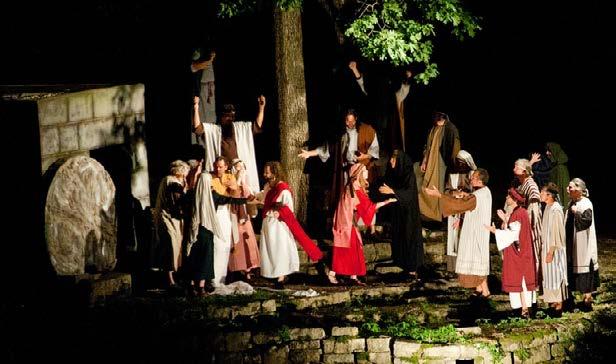
7 minute read
Southern States
Things to Do Civil Rights Inspiration
Several Alabama cities are home to some of the most important Civil Rights monuments, museums, and historic sites. This includes the Civil Rights Institute and Sixteenth Street Baptist Church in Birmingham, Montgomery’s Civil Rights Monument and National Memorial for Peace and Justice, and Selma’s Voting Rights Museum.
Advertisement
Birmingham Civil Rights Institute sits at the corner of Sixteenth Street and Sixth Avenue North, forming the cornerstone of Birmingham’s Civil Rights District, which covers a six-block area. Additional landmarks include Kelly Ingram Park, the Fourth Avenue Business District, and Carver Theater.
The Birmingham Civil Rights Institute provides an in-depth look at the events of the Civil Rights Movement of the 1960s in both Birmingham and the United States, as well as continuing issues that African Americans have faced since. The galleries feature permanent and temporary exhibits on a variety of topics from violent conflict to segregation.
Ninety miles (about an hour and one-half) further south is the city of Montgomer where the civil Rights Memorial stands. It features an an exquisite black granite sculpture commemorating those killed during the struggles of the Civil Rights Movement. The memorial stands in a square next to the Civil Rights Memorial Center, where tourists will find educational displays and exhibits, including the Wall of Tolerance.
Another Montgomery landmark is the newly opened National Memorial for Peace and Justice, a six-acre space dedicated to those African Americans who were victims of lynching and other forms of racial injustice. The memorial includes artwork, sculptures, and monuments, which honor various figures in the Civil Rights movement, as well as a field of 800 monuments each representing a county where lynchings took place.
Go on an adventure hunt to find several important Civil Rights landmarks. The most famous being the Dexter Avenue King Memorial Baptist Church and museum, which was the meeting place of early Civil Rights activits and once the parish of Martin Luther King Jr.

For more on Alabama, >CLICK HERE
Go, See, Do: Great Passion Play
EUREKA SPRINGS - The performance begins with the resurrection of Lazarus and continues on through the Triumphal Entry of Christ into Jerusalem on the day known as Palm Sunday. During the performance you will witness the significant events leading to and including Christ’s crucifixion, resurrection, and ascension into Heaven.
You will see the colorful spectacle of the market place, the pageantry of the chariot and camel caravan, and the hustle and bustle of the crowds as they go about their daily activities. You may especially enjoy seeing the live animals on the streets of Jerusalem, the poignant healing, the angel rolling away the stone at the tomb, and the dramatic and exciting ascension of Jesus into the night sky.
Every effort has been made to be historically accurate and true to Holy Scriptures. The Play is performed on a 550-foot-wide, multilevel stage in an outdoor amphitheater which has 4,100 individual seats with comfortable backrests.
Besides Easter weekend performances, the 2021 schedule continues on Tuesday, Friday, and Saturday from May 28 through 30th. Tickets start at $30 per person. However, there are family discounts, youth and children’s rates, and multiple event tickets.
Besides the live outdoor passion play, make sure to plan extra time to visit the History Museum and take a Holy Land Tour. Concessions are available beginning at noon. Starting as early as 6:30 PM - Free performances begin of the Parables of the Potter, David the Shepherd, and the Sculptor.
Enjoy wonderful food in The Great Passion Play’s Great Hall Buffet. Pulled pork, ribs, chicken, a vegetarian dish, starches and vegetables, a full salad bar and dessert bar, as well as beverages make it not only a convenient place to eat, but also a delicious place to dine. (Some of the dishes do change!) It’s all-you-can-eat, and it is open to the public! You can come and eat regardless if you have tickets to anything else on the grounds! Dinner is served from 4:30 PM - 7:30 PM each day the play is performed.
At this same location, the famous 67-feet- tall Christ of the Ozarks stands tall and proud with outstretched arms overlooking Eureka Springs. The seven-story statue continues to be one of the most visited attractions in the Ozarks since it was completed in 1966.
For more information, visit www. greatpassionplay.org/
For more on
Arkansas, >Click Here

Things to Do: See Jewish Museum Sacred Dreams
Dr. Robert B. Feldman, the New York-based art collector, has promised this large-scale installation by Mira Lehr as a gift to the Jewish Museum of Florida-FIU. The artwork, titled Sacred Dreams, is comprised of 183 aerial sculptures that descend from the ceiling of the museum, and is estimated at a value of $300,000. Photo by Michael E. Fryd (2020).

The installation is currently on view at the museum as a temporary loan from Dr. Feldman, and will become part of the museum’s permanent collection in September.
The museum is centrally located in South Beach, in the heart of Miami Art Week and Art Basel Miami Beach. Dr. Feldman previously lived in Florida, and was known for having “one of the most important collections of contemporary art in Florida.”
The 183 aerial sculptures are made of burned and dyed Japanese paper, acrylic, ink, and resin.
“I am honored to donate this major work by Mira Lehr to the Jewish Museum of Florida-FIU,” said Dr. Robert B. Feldman.
“This large-scale work now has a permanent home in the community for all to enjoy, including the millions of tourists that visit Miami Beach, at this beloved gem of a museum that is of historic importance in the Southeast.”
The museum is on the National Register of Historic Places, and is the only museum dedicated to telling the story of more than 250 years of Florida Jewish history, art and culture with a growing collection of more than 100,000 items.
“We are very grateful to Dr. Robert B. Feldman for this donation to the museum,” said Susan Gladstone Pasternack, the Executive Director of the Jewish Museum of Florida-FIU. “Mira Lehr created this stunning installation, Sacred Dreams, specifically with the museum in mind as a result of a personal visit here.
After Lehr spent time at the museum, she reflected upon the emotions and inspiration she felt and created these 183 aerial sculptures to interact with the light they create together with our
See Jewish Museum Sacred Dreams

stained-glass windows. The result is truly magnificent.”
Nationally renowned as an eco-feminist artist, Lehr is celebrated for working with imagery from the natural world, creating layered abstract compositions with unconventional materials. The 60 Minutes television correspondent Morley Safer referred to her as “the mistress of light.”
Sacred Dreams by Mira Lehr showcases the artist’s six decades of art making on Miami Beach. The lush flora of her Miami Beach home (where Lehr grew up in the 1940s) has a profound influence on her aesthetic vocabulary.
“I want viewers to feel like they are walking beneath an aerial garden of luminous, reflecting sculptures,” said Mira Lehr. “A holy garden of Light, that takes people out of the actual world and transports them onto a spiritual plane,” adds Lehr.

In 1960, Lehr co-founded in Miami Beach one of the country’s first coops for women artists. It was called Continuum and thrived for more than 30 years, blazing a pioneer trail that helped establish Miami’s evolution as an art destination.
She is known in the art world as “the Godmother of Miami’s art scene” and has mentored many artists through the years.
The Jewish Museum of Florida-FIU is housed in two restored historic buildings that were once synagogues for Miami Beach’s first Jewish congregation. The original synagogue was built in 1929, and the second, built in 1936, was designed by Art Deco architect Henry Hohauser and features 80 stained-glass windows, a copper dome, and a marble bimah.

While reflective of the Jewish experience in Florida, the museum creates understanding of the shared immigrant experience in our multicultural society.










